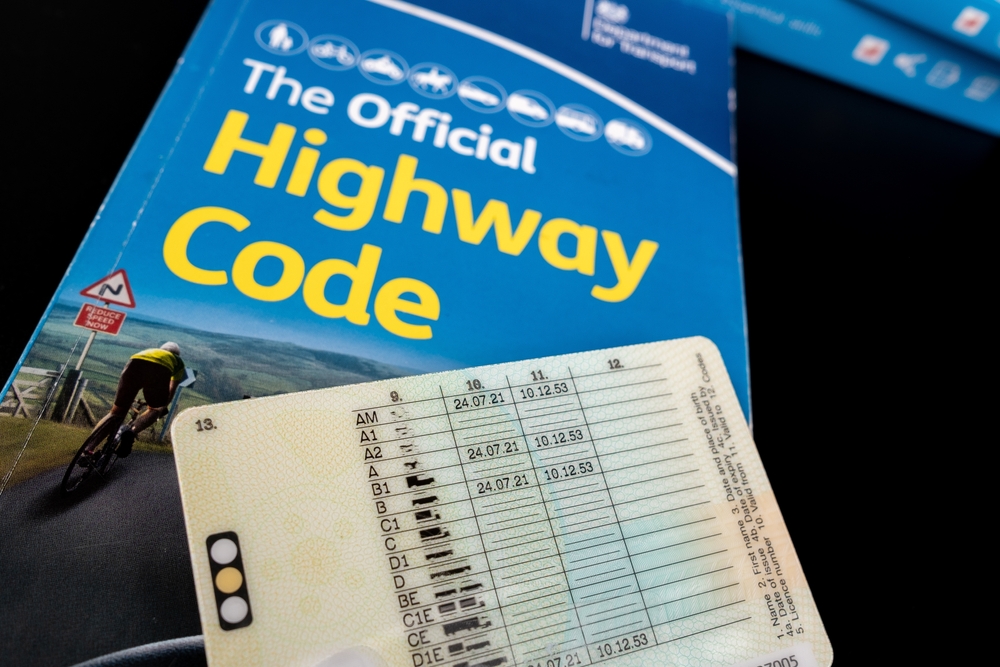The Highway Code is an unusual document in that it governs the way every individual – driver, cyclist, motorcyclist or pedestrian – uses the roads.
It is not a legal document and its rules are not official highway laws. It contains 307 regulations and contravention of many of these can give rise to penalties.
Much of the code is actually supported by laws and it is easy to tell which ones, because they use the explicit terms ‘Must’ or ‘Must Not’.
For the rest of the rules, if you fail to comply you may not be directly liable to a fine, prosecution or disqualification, but the text of the rules can be used in a court as evidence of a transgression.
In traffic cases, sections of the Highway Code are frequently read out to clarify for the judge and jury the standard of behaviour expected of a competent driver.
A brief history

The history of the Highway Code predates the first highways legislation, the Road Traffic Act of 1930, and was published to give motorists guidance on the use of traffic signals.
As the use of motor vehicles increased and road systems became more complex, the regularly updated Highway Code assumed the hybrid status it enjoys today.
Knowledge of the Highway Code is essential, because unless drivers are familiar with its provisions it can have only retrospective application which will do little for road safety.
If you ask older drivers when they last read the Highway Code the answer is, usually, many, many years ago.
This means that they may have forgotten a significant amount of its detail and certainly won’t have assimilated recent updates.
This problem of awareness is one of the principal concerns surrounding the government’s latest plans to revise the code which comes into force early in 2022.
The AA polled 13,000 members in December 2021 and found that two out of three had no idea that changes were imminent.
Many of the new rules carry legal force, making drivers liable for offences they don’t even know exist
For many people, driving is an essential part of their working day and is certainly true for most inventory professionals and the wider gig economy.
Those who work in the transport industry are the most obvious examples but the numbers actually run into the millions across a wide variety of sectors.
Inventory Base concerns itself specifically with the circumstances of inventory clerks and reporting professionals, whose driving patterns follow no fixed routes or routines and bring them into contact with the broadest range of road conditions, from single lane country roads, through town centres and A roads to the motorway network.
The new rules in summary
The main change to the Highway Code is what is being called a new ‘road user hierarchy’ or pyramid which classifies road users in terms of the danger they represent to others.
Obviously, this puts HGV drivers at the top of the list, ahead of van and car drivers, with motorcyclists and cyclists next, and pedestrians, unsurprisingly, at the bottom.
In principle, this should improve safety for the most vulnerable, but it requires all users to be as clear about the rules as they are about rights of way on roundabouts.
The effect of this hierarchy will be to imply automatic culpability for those at the top of the pyramid if an accident also involves members of classes lower down the list.
Cyclists are to enjoy priority over all motorists at junctions, where drivers who are planning to turn or change lanes must allow the cyclist to proceed first.
Cyclists, in turn, must give way to pedestrians on shared tracks.
Drivers and cyclists must now give way to pedestrians who wish to cross the road at any point if traffic is slow or stationary. In addition, should a cyclist wish to cross in these circumstances, drivers must allow them.
However, the common practice of flashing your lights to invite a pedestrian to cross will be formally banned.
The code goes on to prescribe rules designed to give more space to cyclists, horse riders and horse-drawn vehicles on roads generally – if in doubt, give way.
These changes will undoubtedly lengthen journey times and working drivers who are following strict timetables should allow for this in order to avoid committing offences in their haste.
At speeds below 30mph, drivers will be expected to maintain a distance of 1.5 metres between their vehicles and slower road users and motorbikes, and 2 metres at speeds in excess of 30.
An unusual measure being introduced
Known as the Dutch Reach; this will be of particular interest to those who make several calls in a day and are therefore getting in and out of their cars frequently.
For couriers, this could be well over 100 times a day, but inventory clerks on their way to carry out a property inspection should also take note.
The Dutch Reach is the practice of opening your door with the hand furthest away from it. This forces your body to turn towards the window and makes it much more likely you will see an approaching cyclist or pedestrian, who might otherwise be hit by the opening door.
The Highway code is set to change on the 29th of January 2022
None of these new rules has an automatic effect on insurance, but the danger is that a poor campaign of public awareness will leave most road users ignorant of their new rights and obligations.
The result of this could be an increase in the number of minor offences – and a few major ones – whose proliferation might push up insurance premiums but which could be avoided through proper education.
It seems that the code changes will take effect long before most drivers are aware of them
At Inventory Base, we specialise in providing inventory property management software but we take the interest of inventory clerks very seriously and would strongly advise anyone who works in this capacity to familiarise themselves with the new requirements as soon as possible.

Key takeaways
Date of proposed enforcement: 29th January 2022 with no plans to communicate the changes until they actually come into force
8 new rules being introduced as well as 49 updates to existing rules. Learn more.
Key proposed changes
Rule 1 – Those in charge of vehicles that can cause the greatest harm in the event of a collision bear the greatest responsibility to take care and reduce the danger they pose to others.
Cyclists and horse riders have a responsibility to look after pedestrians. It also stresses that all road users have responsibility to ensure their own safety, as well as that of others.
Rule 2 – For drivers, motorbike riders, horse riders and cyclists. It states: ‘At a junction you should give way to pedestrians crossing or waiting to cross a road into which or from which you are turning.’
Essentially this means if you are turning into a road and there’s a pedestrian waiting to cross, you should give way to them. Cyclists also have to give way to pedestrians on shared-use cycle tracks.
Rule 3 – This next update is aimed at drivers and motorcyclists.
It states that ‘You should not cut across cyclists, horse riders or horse drawn vehicles going ahead when you are turning into or out of a junction or changing direction or lane.’
You shouldn’t turn at a junction if doing so would cause a cyclist or horse rider to stop or swerve. Instead, you’re advised to wait for a safe gap before turning in.

